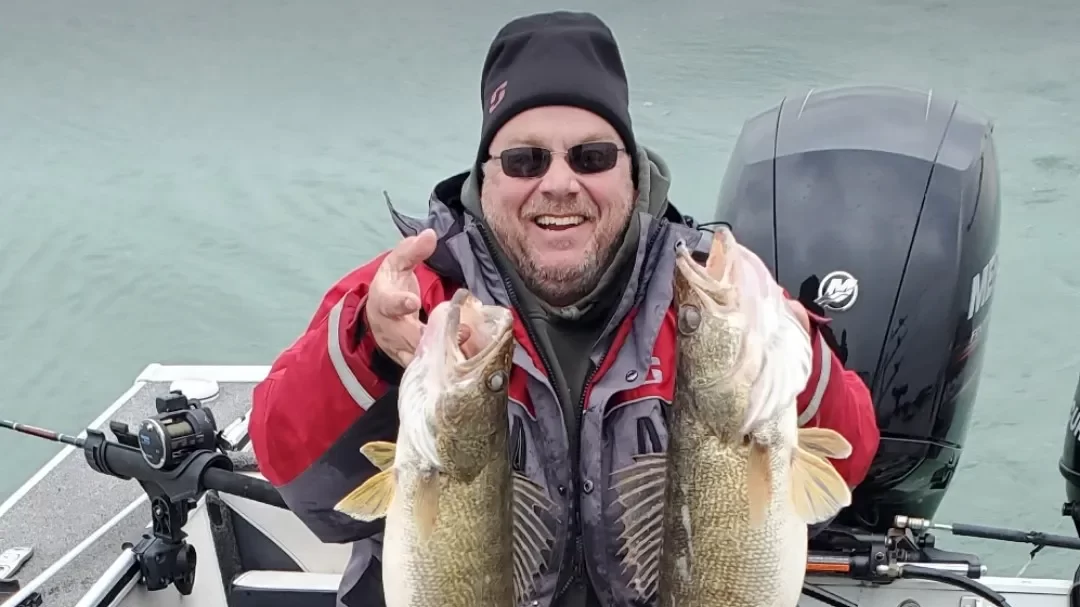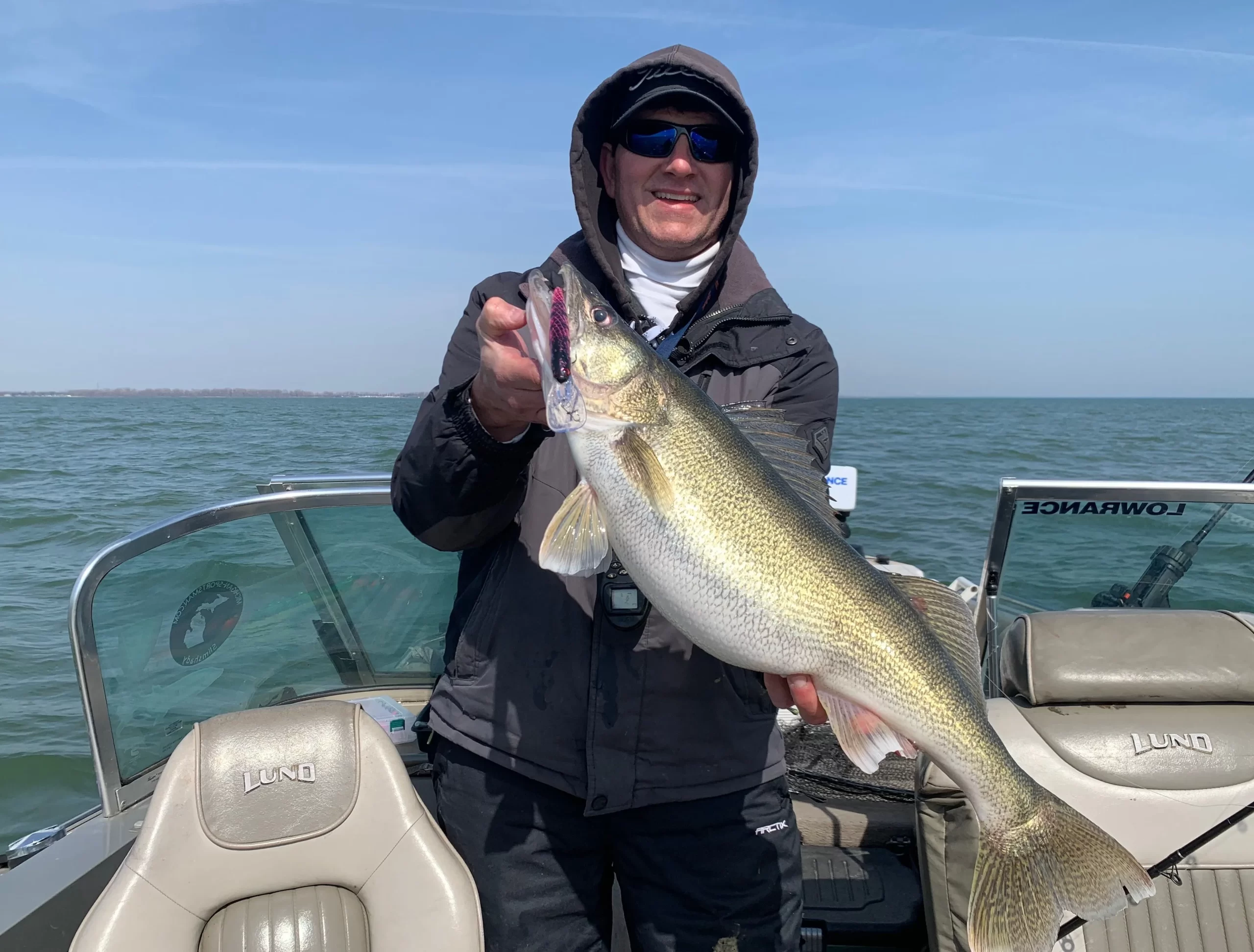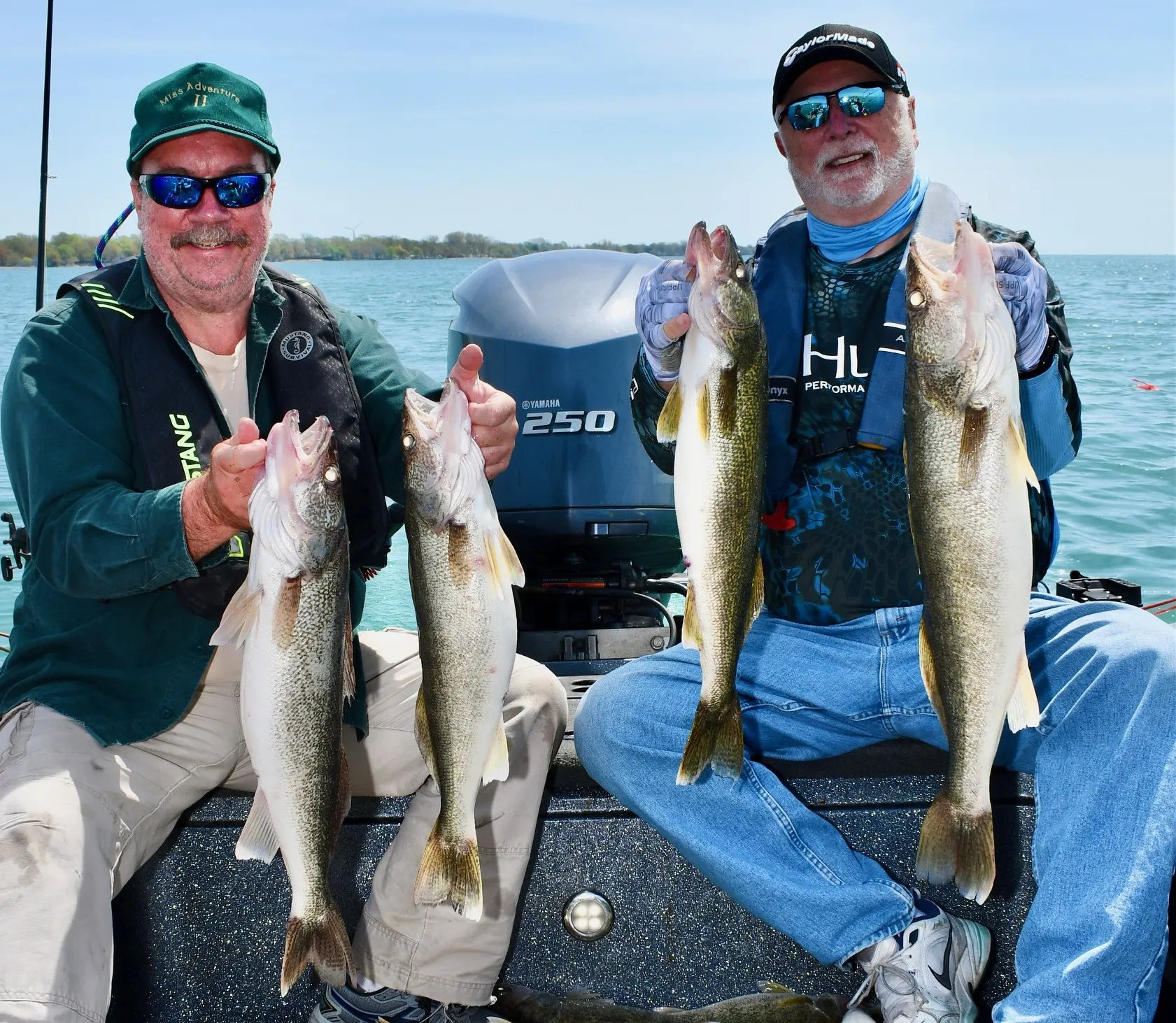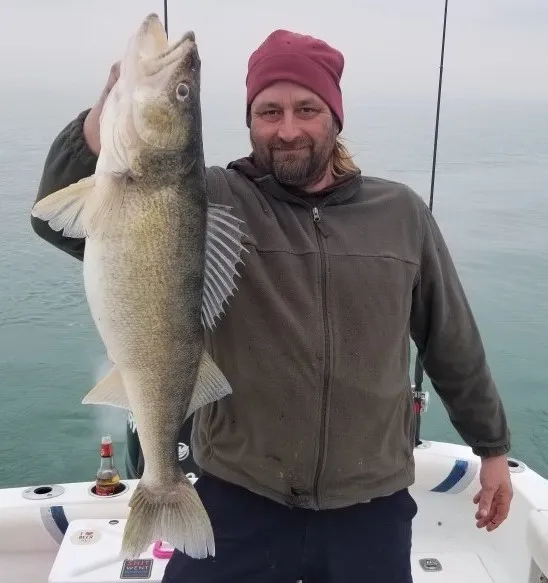Managing Lake Erie Walleye

* This page contains affiliate links. The Great Lakes Fisherman may earn a commission on items purchased through these links. For more on this, please click here.
In case you didn’t know, Lake Erie walleye fishing is the best in the world. I may be a bit biased though. Growing up in southeast Michigan, I had the luxury of fishing the lake from the time that I was a young boy. Nonetheless, I have never caught walleye with the size & in the numbers that I have on Lake Erie, anywhere else. It has everything a walleye loves: plenty of forage, dark water, and massive tributaries that provide them with some of the most ideal spawning grounds found anywhere on earth.
Walleye are native to the Great Lakes and are found in fishable numbers in all of them. But a combination of factors has led to immense numbers of them in Lake Erie. Lake Erie receives considerably more fishing pressure than the other Great Lakes and despite this, it continues to produce many more fish per angler-hour. And walleye are the top attraction.
But managing Lake Erie walleye is no easy task. The reputation the lake has developed over the years has resulted in visitors from all over the country flocking to the lake every year to get a piece of this phenomenal fishery. The industry that the lake supports runs in the hundreds of millions of dollars. This has led to immense pressure on state and federal agencies whose task it has become to manage the fish in this lake. And with walleye being the most popular, there is a lot of focus on this key species.
Q & A with Jim Francis of the Michigan DNR

To better understand what goes into the task of managing Lake Erie walleye, The Great Lakes Fisherman caught up with Jim Francis of the Michigan DNR to discuss the coordination with other agencies and some of the factors that they consider and study in the process.
GLF: What is your name, title, and organization?
Jim Francis, Lake Erie Basin Coordinator, Michigan Department of Natural Resources – Fisheries Division
GLF: Which state, provincial and federal agencies are involved of the efforts to manage the Lake Erie walleye population?
The state and provincial agencies have jurisdictional authority over the management of their respective fisheries resources – so for Lake Erie, that includes Michigan, Ohio, Pennsylvania, New York, and Ontario. But because we are managing a shared resource, we coordinate management through the Lake Erie Committee under the Great Lakes Fishery Commission. But management is broader and includes many state environmental agencies, federal agencies like the US Fish and Wildlife Service, US Geological Survey, Environmental Protection Agency, and finally, university, research partners, and conservation organizations.

GLF: How long has the Lake Erie walleye population been actively managed?
The first inter-jurisdictional fishery quota management program was implemented in 1976. This established a Total Allowable Catch (TAC) for walleye from commercial and recreational harvesters in Lake Erie. The goal was to maintain a sustainable walleye fishery.
GLF: If possible, please outline the annual calendar for the walleye management plan (or provide links to similar info).
The TAC’s are announced annually at the annual Lake Erie Committee meeting that takes place at the end March. But there is a huge amount of work that goes into establishing the TAC, prior to the annual meeting. A large amount of data is collected across the lake from spring through fall to evaluate the number of walleye present, age structure of the population, growth rates, reproduction rates, and fishery results. During the winter is when the Walleye Task Group (technical staff from the Lake Erie Committee) processes all the survey and assessment data and use a computer model to generate a range of safe harvest levels to maintain a sustainable fishery. While the purpose of the committee is to look at the total body of survey data, each state makes adjustments based on info from the local surveys that are completed in each jurisdiction, when setting their respective creel limits.
GLF: How often are Lake Erie walleye stocking levels evaluated?
Walleye are not stocked in Lake Erie; it is managed as a self-sustaining fishery.

GLF: If the fishery is self-sustaining, what “levers” are used to manage the population?
There are 2 primary areas we can impact to help regulate the population.
The first is that we can regulate harvest. As mentioned above, setting the TAC is one of the main tasks of the Lake Erie Committee and by setting appropriate TACs, we can help control the number of mature walleye that are taken out of the population each year.
The second area that we can impact is habitat quality. Most fish in the Great Lakes utilize marshes at one point or another during their lifecycle. For walleye, the fish rely heavily on marshes during the fry stage of their development. The marshes provide food and shelter from predators until the fish are large enough to survive in the open lake. By maintaining and improving marsh habitat, we can have a direct impact on the survivability of young-of-year (fry that that were born that same year).
GLF: How has the cleanup of lake water pollution over the years impacted the Lake Erie walleye population?
Pollution during the early part of the 1900’s was certainly a contributor to the walleye fishery collapse in the 1960’s. The highly-publicized fire on the Cuyahoga River in 1969 prompted key legislative action in both the US and Canada, including the creation of water quality management agencies, environmental regulations, and the signing of the binational Great Lakes Water Quality Agreement in 1972. These actions reduced pollutants from industrial, municipal, and agricultural point sources through the regulation of discharges. The resulting improvements in water quality contributed to a recovery of the walleye population.
GLF: How has the introduction of zebra and quagga mussels had an impact on the Lake Erie walleye population?
It is difficult to determine cause and effect of zebra and quagga mussels on the walleye population in Lake Erie. Zebra mussels were first found in the Great Lakes in the late 1980s. While mussels have been known to affect water clarity due to their filtering, it does not appear to be having an impact in Lake Erie. Another potential concern was that mussels would strip the water column of plankton that are especially important to young walleye. But again, there does not seem to be a reduction in the number of young walleye being produced in Lake Erie.
GLF: How has the introduction of the Round Goby had an impact on the Lake Erie walleye population?
There does not appear to be a direct connection between round gobies and walleye in Lake Erie. Gobies are an important part of the diet of some fish, for example smallmouth bass. They are eaten extensively by smallmouth bass and have improved growth rates of bass. Whereas gobies will occasionally be found in walleye stomachs, but they are not an important food item.

GLF: Are there any impacts (positive or negative) that climate change is having on the Lake Erie walleye population?
The jury is still out. All the data seems to indicate that Lake Erie is warming and there is a pattern of less ice cover in the winter. But it is unclear how these changes will affect walleye numbers.
GLF: What is magnitude of the walleye population gradient from the east end of Lake Erie to the west end?
There are a number of walleye stocks from Saginaw Bay in Lake Huron, all the way to the east end of Lake Erie. But walleye migrate and mix throughout the system. There is no question that the stocks in the western basin are the primary drivers of walleye abundance. But after spawning is completed, these fish distribute north up the Detroit River, as well as to the east end of Lake Erie. One study estimated that 90% of the walleye harvested in the East Basin were seasonal migrants from the western basin.
GLF: What are some of the challenges that the agencies will be facing in managing the Lake Erie walleye population over the next decade?
Invasive species continue to be high on the threat list. Although I mentioned earlier that zebra mussels and round gobies do not appear to have affected walleye – there is always the concern that the next one could be a game-changer. Think of bighead and silver carp. And there are examples of other invasive species, that have impacted walleye – like sea lamprey. Sea lamprey devastated native fish species in the Great Lakes, fortunately a control program was developed – but at a cost. A recent estimate is that $10 million is spent annually to control sea lamprey in the Great Lakes. As with any invasive species – the key is prevention.
GLF: Is there anything else you would want anglers to know about the management of the walleye population in Lake Erie?
I think it is important to highlight that today’s walleye fishery is at historic levels. It is not uncommon to have one strong year class carry a fishery for up to a decade. But we have now had five consecutive years of exceptional production, with the 2021-year class being the highest ever recorded. This is unprecedented to have a string of year classes like we have seen from 2018-2022. Targeted harvest rates for walleye in Michigan waters of Lake Erie have been ranging from 0.5-0.6 walleye per hour. These harvest rates are comparable to the mid-1980s during the peak of the walleye fishery.
A Final Word
The Great Lakes Fisherman would like to thank Jim for taking the time to answer our questions and layout all of the work that goes into managing such a massive fishery.
If you see a natural resources worker at the boat ramp or out on the water, please remember to thank them for the work they do. This work is essential to a quality fishery and is what makes our Great Lakes the best inland fishery in the world.
Finally, if there are other lake management topics that you would like to hear about, please drop us a comment below and let us know about it. We are always looking to provide you with the content your are interested in hearing about!
